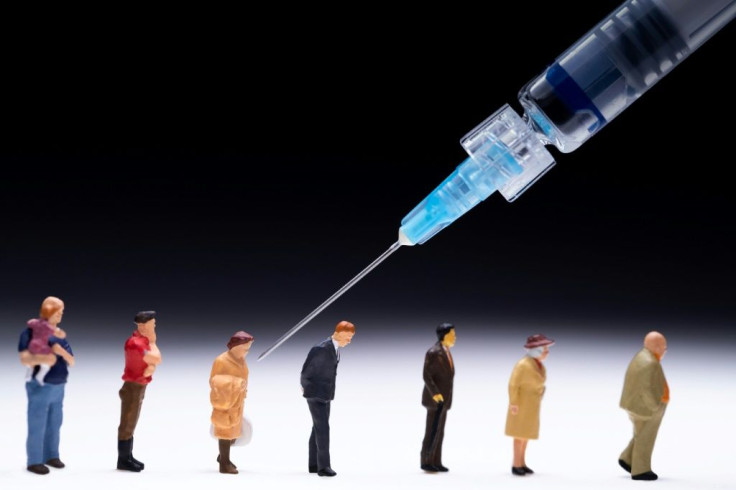Here's Why Skin Rashes From COVID-19 Vaccine Could Be A 'Good Thing'
KEY POINTS
- A nurse reportedly developed rashes after receiving her first dose of the COVID-19 vaccine
- Skin reactions from COVID-19 vaccine can be "a good thing," health experts said
- Most of the reactions from the vaccine can be easily treated with over-the-counter medication
Tina Burke, a 40-year-old nurse in Massachusetts General Hospital, experienced a rashlike skin reaction six days after getting her first dose of Moderna's COVID-19 vaccine. Initially developing on the injection site itself, the rashes quickly spread out to Burke's hands and feet -- both covered in itchy red bumps.
“It spread all over my hands and around the heels of my feet, and I could even feel one on the roof of my mouth,” Burke told The Washington Post. “The itching was so bad I couldn’t sleep.”
The rash Burke developed caused her to worry about not being able to get the second dose of the COVID-19 vaccine. However, experts said that these reactions are typically very easy to address using over-the-counter treatment. If the skin reaction occurs after the first dose, vaccine recipients should not fret over getting their second dose, noted the experts
“Even though skin reactions to a vaccine can look scary, most are not severe or long-lasting, and show us that your body likely is developing a nice strong immune response to the vaccine, which is a good thing,” said Esther Freeman, director of Global Health Dermatology at MGH and the associate professor of dermatology at Harvard Medical School. Freeman is the lead author of a paper published in the Journal of the American Academy of Dermatology that talks about cutaneous reactions that come from getting inoculated.
In the paper, Freeman reported "a spectrum of cutaneous reactions after COVID-19 mRNA vaccines. Most patients with first dose reactions did not develop a second dose reaction, and no patients in the registry developed serious adverse events after the first or second dose. These data provide reassurance to patients and providers."
Otherwise known as "Covid arm," a rashlike skin reaction is generally considered to be a good sign. For health experts such as Lisa Arkin and Beth Drolet, this type of reaction likely represents an immune system response and may very well be connected to the fact that many parts of the body where rashes develop possess many ACE2 receptors -- specific molecules that the coronavirus uses to latch onto cells and infect them.
“ACE2 receptors are expressed throughout the body but are particularly abundant in skin structures including sweat glands and blood vessels,” Arkin, the director of pediatric dermatology at Wisconsin, noted. “Because these mRNA vaccines work by providing instructions to your body to make spike protein, this local response to the vaccine makes mechanistic sense.”
Drolet, who is the professor and chair of dermatology at the University of Wisconsin School of Medicine and Public Health, shared the same sentiment.
“The mRNA vaccines prompt the body to make spike proteins, which bind to ACE2 receptors, although in this case, they are harmless because there is no real virus present,” the professor said. “There are many ACE2 receptors in the skin, so it wouldn’t be surprising to see a rash result.”
Physicians reassured Burke that she may still receive her second dose of the COVID-19 vaccine, with the suggestion that she pre-medicate with over-the-counter treatment for her rash several days in advance and for a week following her vaccine, to which the nurse complied. Burke reportedly experienced only mild symptoms thereafter.

© Copyright IBTimes 2024. All rights reserved.





















